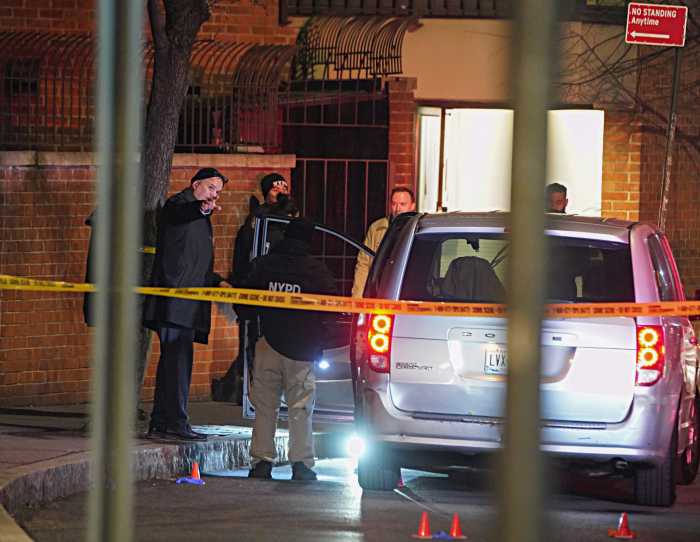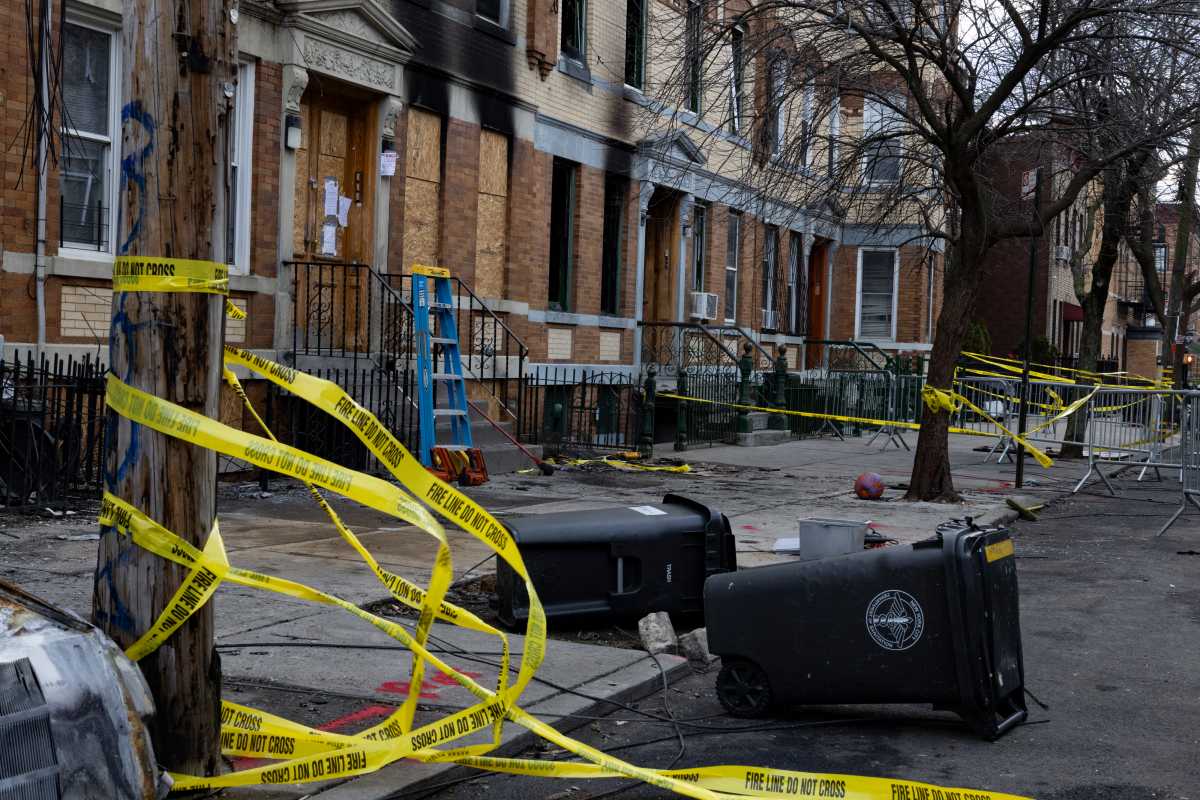By Jerry Tallmer
Director sees staging as ‘a scream to humanity’
O, she doth teach the torches to burn bright!
— Romeo, Act I, Scene 5
No, ’tis not so deep as a well nor so wide as a
church door; but ’tis enough, ’twill serve: ask for
me tomorrow, and you shall find me a grave man. I am peppered. I warrant, for this world. A plague o’ both your houses
— Mercutio. Act III, Scene 3
Yes, you get the naked truth if you go to Dario D’Ambrosi’s take on William Shakespeare’s “Romeo and Juliet.” at Ellen Stewart’s La MaMa E.T.C. (Experimental Theatre Club) — but it won’t be just the way Shakespeare put it.
Voluble, irrepressible Dario D’Ambrosi — founder of Teatro Patologico and Ellen’s favorite Italian playmaker — sees things in a slightly different way than the rest of us. Speeded up, shall we say; multiplied across the centuries in craziness, in violence, in simple bloodshed,
Is bloodshed ever simple? Don’t say you weren’t warned.
I’ve been working for 30 years now,” says D’Ambrosi, “with people with mental disabilities. I can tell you that their pain, their desperation, is somehow comparable to this play. I want this [“Romeo and Juliet”] staging to be seen as a scream to humanity, as a way to ask the world to stop this barbarousness.”
Reached by telephone in Rome a week before he was to arrive in New York to direct the staging at La Mama, D’Ambrosi outlines its bare bones:
“There are four actors. One Romeo [Enrique Esteve]. One Juliet [Ashley Williams]. Also two military, in uniform. One from the U.S., one from Iraq. Yes, yes, soldiers! Sorry. Soldiers! One from the house of Cappelletti, one from the house of Montecchi” — i.e., the Capulets and the Montagues.
“There is some film. The war. So much bad stuff happening in the world. So much anger. So much violence.
“The two actors — the two young people — come nude on stage. The two military don’t want these two people to make love. And then —”
Well, that won’t be given away here.
“I know everybody will be very angry at me,” says D’Ambrosi, “but the world is going crazy…more crazy than the institutions where I worked with mentally ill children for many, many years.”
Dario D’Ambrosi was born in Milan in 1958. While still in his teens, he became an all-Italy star in what the rest of the world calls football but we Americans call soccer. Equally strong was the pull of theater — and of theater as a means of restoring life to those shut out from life.
In 1979, the soccer player cum playwright walked himself into Off-Off-Broadway’s La MaMa. He was then 21 years old, and he had a play Ellen Stewart liked the sound of. It was “Tutti non ci sono,” or “Everybody’s Not Here.” A recluse steps out of his hideaway, takes a look around at the world, and goes back in. End of play.
Since then, D’Ambrosi has come to La MaMa with a new (and sometimes longer) play many, many times. He is, in fact, a La MaMa playwright in residence — without residing there. Standing out among these works ate “La Trota,” or “The Trout”; “Days of Antonio” — about an insane boy raised in a henhouse; and “My Kingdom for a Horse” — in which Richard III is an embryo in the womb of an unfeeling mother.
Last spring, D’Ambrosi pulled off a new phenomenon here: a Drive-In Stage, wherein an audience in some 40 parked cars watched a live performance — along Washington Street between Spring and Canal — of a melodrama called “Night Lights” (about a mysterious assignation between a professor and an ex-convict).
He has also written and/or directed a couple of films, one of which, the 2003 “Il ronzio delle mosche” (“The Buzzing of the Flies”), put the flies buzzing within the head of exquisite Greta Scacchi.
But a motion picture of, shall we say, somewhat more notoriety, is Mel Gibson’s “The Passion of the Christ” (2004) — in which actor Dario D’Ambrosi has his moments as a Roman soldier lashing Christ on the way to the Crucifixion. At that time D’Ambrosi had said:
“I whipped Christ every day for a month during the shooting in Rome. They now have a name for me in Rome: Il Flagellatore, the Whipper. Everybody says: ‘I know the Flagellatore’ or ‘The Flagellatore, he is a friend of mine.’ There is even a Flagellatore Website.” That same year, 2004, D’Ambrosi brought his own “The Pathological Passion of the Christ,” to La MaMa.
It was set — where else? — in a mental hospital.
“Here we are with Pilate and Caiphus and Peter and Judas and, yes, Satan” — the hospital floor sweeper — “but only an insane Jesus can save the world” … from war, pestilence, starvation, disease, death. When the insanity is removed from Christ’s brain, the salt of the world — humanity — no longer has its savor. Satan triumphs. Just look around you.
Now, by way of transoceanic telephone, D’Ambrosi could not contain his excitement over an achievement, at last, after many years: converting his outworn Cavallo Blanco (White Horse) hospital-residence-theater to “a new theater I opened ten days ago, a Teatro Patologico in the center of Rome, near the Pantheon and the Plaza di Popolo. A big stage like the Annex at La Mama, and offices, a secretary, ten bedrooms, everything!”
Back to New York and La MaMma. “You know, I’ve been thinking many, many times, many many years, about ‘Romeo and Juliet.’ ”
So here it is. Shakespeare alla D’Ambrosi. Be prepared for a jolt.








































